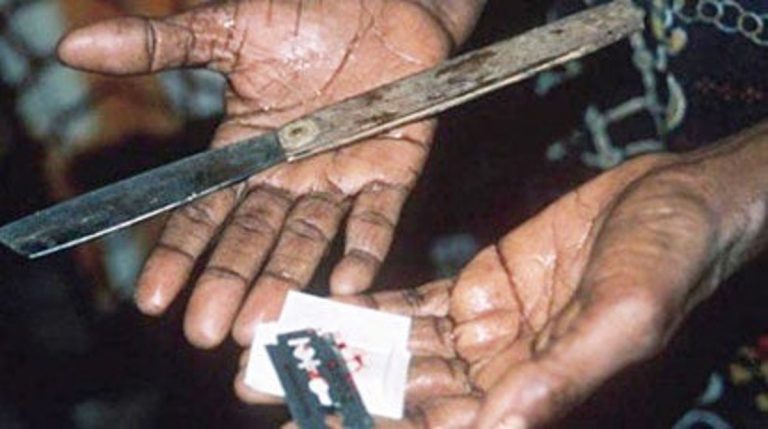Sudan’s government has criminalized female genital mutilation (FGM), clamping down on a practice that most of the country’s women and girls have endured. Globally, more than 200 million of girl and women have been suffered from FGM in Africa, Middle East and Asia.
The WHO/UN statement says the cutting predominantly occurs in 28 African countries, but is also performed in Asia and among immigrant groups in Europe, Australia, Canada and even the United States. In Africa, people considered FGM as a vital cultural heritage for women to grow properly, as marriage requirements and control women’s’ sexuality.

The ‘medicalisation’ of FGM is an alarming trend being seen all over the world but it doesn’t justify this abuse of human rights of young girls and women.
There has been an overall decline in the prevalence of FGM over the last three decades, but not all countries have made progress and the pace of decline has been uneven.
As Western governments have become more aware of FGM among some immigrant communities, legislation has been implemented as the main intervention tool (European Parliament, 2004; Leye et al., 2007). Sweden was the first country to introduce a specific law prohibiting FGM/C in Europe, the 1982 Act Prohibiting Female Genital Mutilation (Leye & Sabbe, 2009). Now, there are laws prohibiting FGM in most Western countries (UNICEF, 2005a.
Although responses to preventing the practice of FGM in Western countries primarily consist of prosecution, some countries—such as Austria, the Netherlands, and the United Kingdom—give priority to prevention strategies, including awareness raising and empowerment of women (Poldermans, 2006).
According to United Nations data around 90% of the female population in Sudan have suffered FGM, making it one of the world’s most-affected nations. Nearly nine out of 10 Sudanese women aged 15 to 49 have been cut. A majority have undergone a procedure known as infibulation, or ‘pharaonic circumcision’, in which all or part of the inner and outer labia, and usually the clitoris, are removed. Most often the operation is performed by a traditional birth attendant. It is a procedure that comes with no health benefits, but high costs. It affects a woman during her period. It causes infections. It is a problem early in the marriage, and during pregnancy and delivery.
FGM considered as a form of violence against women, the UN Convention on the Elimination of All Forms of Discrimination against Women can be invoked. Similarly, defining it as a form of torture brings it under the rubric of the Convention against Torture and Other Cruel, Inhuman, or Degrading Treatment or Punishment. Moreover, since FGM is regarded as a traditional practice prejudicial to the health of children and is, in most cases, performed on minors, it violates the Convention on the Rights of the Child. An interagency statement on FGM, issued by 10 UN organizations, was issued in 2008.
Sudan was the first African country to introduce legislation against genital mutilation. This happened in 1946, when infabulation was prohibited through a supplement to the penal code. Less severe procedures were permitted. The law was upheld as Sudan gained its independence in 1957, and provided for a fine and/or imprisonment up to seven years for practitioners of infibulation. In 1974, the maximum sentence was reduced to five years (SOAT 1999). The current penal code, however, does not cover genital mutilation, although its provisions on “physical injury” might potentially cover genital mutilation (US Department of State 2001). The authorities issued a decree in 2003, outlining that health personnel were not permitted to perform genital mutilation. Nor are they allowed to perform reinfibulation.

Sudanese doctors have been involved in research and study efforts since the 1960s, but it was not until the 1970s that anti-FGM activities gathered strength. Towards the end of the 1970s, both the Sudan Family Planning Association and the Sudan Society of Obstetrics and Gynaecology adopted recommendations with a view to abolishing genital mutilation. In the wake of this, several voluntary organizations were established. Currently there is a number of government and voluntary organizations working towards the elimination of FGM. But despite these long term efforts, genital mutilation continues to be widespread in Sudan.
More than 90 percent of girls in Northern Sudan are subjected to the most severe form, i.e. infibulation.
Sudan has 18 states with different ethnic groups and different socio-cultural practice. FGM is widely practiced in Sudan particularly among girls aged between 6 and 12 years old. The FGM is usually performed by the midwife without any anaesthesia or antibiotic.
The prevalence of female circumcision is higher among women living in rural areas (71.5%) compared to those who live in urban areas (28.5 %).
However, 79 percent of the women in the age group 15-49 according to research results are in favor of upholding the custom. No major differences were recorded in the answers from urban or rural populations.
The highest prevalence of FGM, according to Adel Hussein Elduma study was reported from South Kordofan state (7.8 %), followed by East Darfur with the percentage of 7.6. The lowest prevalence of female genital mutilation was in Red sea state which was 3.0%.
Religious affiliation is one of the factors determining which type of genital mutilation is to be performed. According to UNICEF (2000), infibulation is most common among Muslim women (83 percent compared to 27 percent of Christians). Sunna (gata al- bazr (i.e. excision of the prepuce and all or part of the clitoris, equivalent to type I FGM) is mainly practiced by Christians (46%).
South Sudanese migrants and refugees in North Sudan have, for instance, started practicing genital mutilation, and the custom has gradually spread to various ethnic groups in the western and southern parts of the country.
Migrants and internally displaced persons from South Sudan living in the north adopt a number of other northern cultural traits such as dress, skin discolouration etc. Culture and the preservation of cultural identity serve as the underlying impetus for continuing the practice.

According to researchers and observers, marriage, or future marriage, and sexuality are central in the context of FGM, and the practice is often seen as a symbol of decency, dignity and fertility. The fact that adult women are repeatedly subjected to genitally mutilating operations when they undergo reinfibulation shows converge in the context of FGM.
Such social pressure within the family does not exist independent from the general societal pressure experienced by women (statutory use of hijab, dress style etc.).
The survey showed that the women had only very modest influence on the decision whether to be reinfibulated. They all felt strong pressure from their female counterparts, particularly from female relatives and mothers, and other older women in the local community. The survey does not cover the risks involved in resisting such social pressure.
However there are doubts, that the new Sudanese law can change the situation with FGM. According to the research “The limited effectiveness of legislation against female genital mutilation and the role of community beliefs in Upper East Region, Ghana”, published in 2009.
the majority of population of both sexes and different ages from local communities are aware of the law on FGM. However, their knowledge of the reasons for the law, the content of the law and ways for women to seek redress on matters such as the appropriate institution to report FGM occurrences or to go for protection in case they are threatened with FGM and also to seek justice when their rights are violated, were not in-depth.
So, communities want to maintain the practice because of tradition, while the state has criminalized it because it represents a human rights abuse and because of the harm it inflicts on the victims. The gap in perception between community members and the state continues to create challenges for effective intervention by the state.




